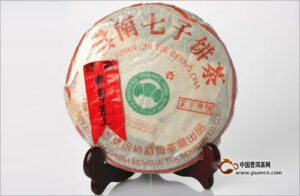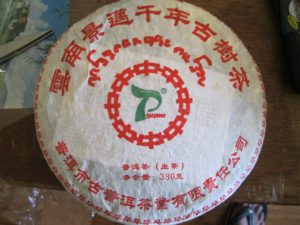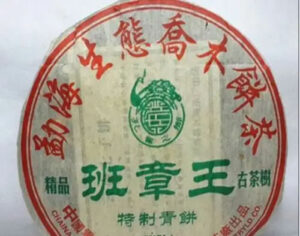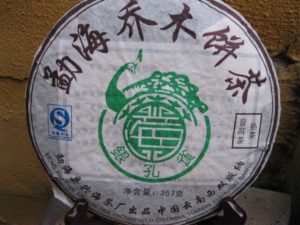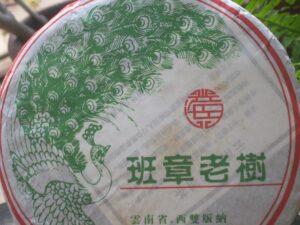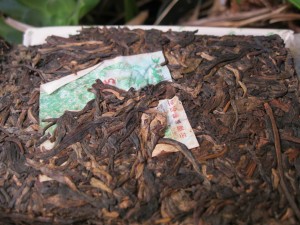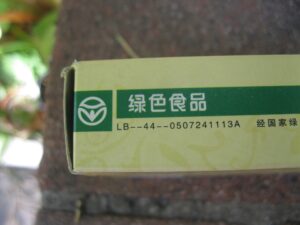Puerh Junky Discusses Peacocks
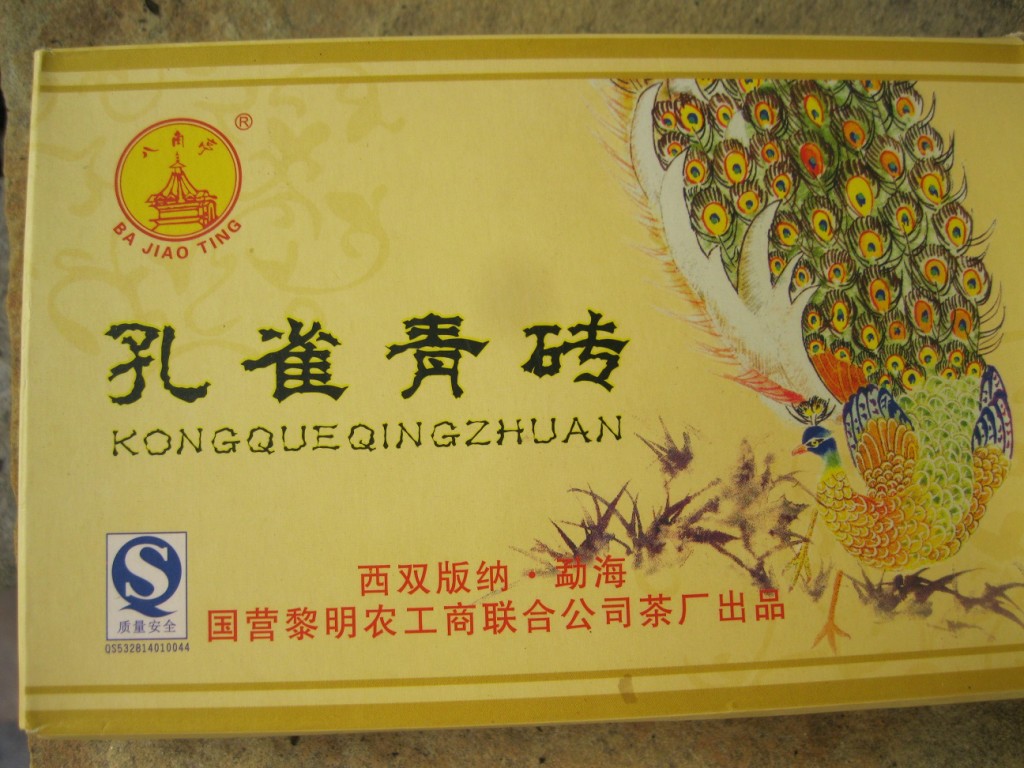
Puerh Junky Discusses Peacocks because in the course of searching for interesting Xinghai productions, the Peacock comes up often. Well, while looking at interesting pictures I clicked upon a site heretofore unknown to me that serves up a bevy of interesting articles. One of them read An Explanation of the Banzhang Ecological Big Cabbage, and Peacock Series; Banzhang Old Tea Big and Small Cabbage (班章生态茶之大白菜·孔雀系列详解!班章老茶之大小白菜!).
In it, the role of the founder of Jindafu, He Baoqiang, is discussed in light of the emergence of the “organic” and “green” certifications. These certifications were marked by a cabbage seal. Long story short, the Banzhang shengtai materials that Mr He produced in cooperation first with Menghai TF and subsequently Xinghai became known as Big Cabbage and Peacock, the former because of the certification insignia and the latter the wrapper.
Now it may be just a coincidence but if it is, that sir name He seems to be extremely common among the well-regarded puerh. Curiously, the pricey Fujin also has a similar Dayi and Xinghai history and their founder also bears the sir name He. There is also a Mr He Shihua who is recognized as a tea meistro who is commissioned in the making of a few productions, has productions listed in the Puerh Yearbook, and has even ascended to the level of having some of those productions faked.
Here, copycatting must be distinguished from fake. One of He Shihua’s production line is unmistakable, featuring red traditional Dai tribal script along a white backdrop. I acquired one such production, not because of any He Shihua awareness at the time, but because it was from Gupuer, a factory I follow.
Here, we have a copycat because Mr He’s name doesn’t appear on the wrapper and the GPE logo is emblazoned within the ring of bazhong. Fakes, also known as tiepai, don’t have their own logo. Years later when I stumbled upon Mr He through searches on Fujin, I ran into this wrapper without any logo but essentially similar enough to create confusion were one haphazardly scouting for He’s productions. This doesn’t entirely resolve the matter.
From its early days, GPE commissioned some heavy hitters in the production of offerings, sold during the early naughts under the bazhong wrapper. It is quite plausible that the wrapper above from ’13 is actually a reflection upon both their Zhongcha and He Shihua history. The jury is still out. This is a huge but worthwhile digression as wrappers are often telling a story that eludes those of us with only a scad of knowledge about the history. Here we’ll depart from the He part of the discussion to address a couple peacocks in the Puerh Junky Collection: the BZ Peacock and the Peacock Brick.
BZ Peacock and Peacock Brick
The BZ Peacock’s real name is BZ Old Tree. If you recall the opening paragraph about the title referenced, the name BZ Old Tree should ring a bell. The name BZ Peacock was only given to reference the wrapper, but clearly Xinghai was varying a theme in which it played no small role in developing. Xinghai has quite a few of these peacocks from this era. Here’s a pic of the one most highly prized, the Banzhang King:
The presentation here is iconic Xinghai. The peacock is an image that is used by several other factories, Xiangming and Du Qiongzhi’s Pengcheng to name just two. The center varies from one factory to the next and you can see Xinghai’s logo in this one. Usually, the images will read Peacock Country at the bottom. It’s the Puerh Junky’s guess that this Peacock Country logo references the Dai hill tribe/nationality, but this is only a guess.
Here’s the same icon but at the bottom reads Silver Peacock, the name of the production. It doesn’t appear that in terms of the vaunted peacocks that ripes factor at all. That makes sense, as ripes by and large are not taken very seriously no matter how good or expensive they become.
At least some of the vaunted peacocks are noted for possessing a smoky character. In fact, it appears that these were the productions that put smoke on the map, something that seems strange since Xiaguan is known for their smoky offerings. Perhaps it has something to do with smoky productions from Banzhang and the Bulang region more broadly.
Factoring greatly into the fame of the peacocks has to be qi, though I’ve not read anything about this. When the name Banzhang comes up instantly there are expectations, positively none which interest the Puerh Junky. Once queried about whether I thought the BZ Peacock had real BZ, I replied that I didn’t care because I only got it for the wrapper from a factory I follow. It should be noted, however, that among those who have tasted it and are not inclined to comment upon the qi, remarks were volunteered about how “warming” it was. Onto the brick.
Recent discoveries on the vaunted peacocks has afforded the Puerh Junky even greater appreciation for Liming’s Peacock Brick, which bears neither the shengtai nor gushu additions. There’s no reference to BZ either. It does have the smoke, however. It also possesses great sweetness, texture, and durability that distinguishes it from most ripe bricks. The smoke is not heavy and there’s no char effect.
Here’s a write up on my qi experience with the Peacock brick. I originally picked it up in ’15 and after the few I had for offer were snatched up by one buyer, more was purchased in ’19 at more than twice the ’15 price. Perhaps the peacock craze started to sift down into other factories beyond Dayi and Xinghai. After my readings, I decided to check the box for any telltale signs tying it to “the peacocks.”
There it is. The haloed cabbage insignia, the independent verification of being a “green product,” which certifies legit production and environmental standards but not the soil, a step down from but often a stage toward organic. In short, this little Peacock Brick checks all the boxes for being a legit peacock.
Wrap up
Aside from tasting for yourself, this post should go quite a distance in shedding light upon the subject of famous peacocks from the naughts. A nice tidbit on the origins of the Jindafu and Mr He Baoqiang tied in Xinghai’s role in the formation of a now legendary series copied far and wide. Finally, Liming got its two-cents worth in as to why it at least deserves a seat at the table among its more celebrated relatives.

